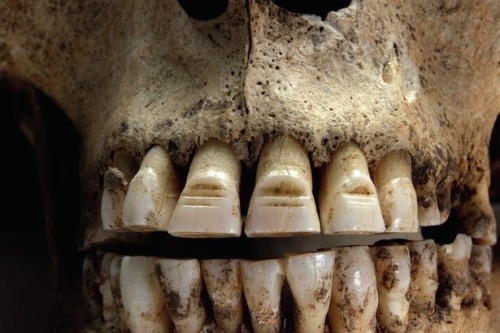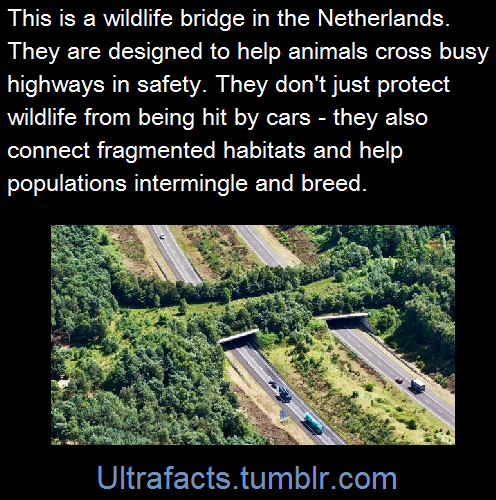Physical Activity Linked To Reduced Alzheimer’s Risk And Greater Gray Matter Volume

Physical Activity Linked to Reduced Alzheimer’s Risk and Greater Gray Matter Volume
Whether they jog, swim, garden or dance, physically active older persons have larger gray matter volume in key brain areas responsible for memory and cognition, according to a new study by researchers at the University of Pittsburgh School of Medicine and UCLA.
The research is in Journal of Alzheimer’s Disease. (full open access)
More Posts from Llamaslikesciencetoo and Others

Baby parrots look like dinosaurs (Source: http://ift.tt/21GVxRO)

Viking men were also heavily tattooed but their most striking and fearsome fashion statement was their gnashers.
They would file horizontal lines into the enamel on their front teeth and paint in red resin. Gareth Williams (curator of the exhibition, Vikings: life and legend) says: “That’s like your punk sticking a safety pin through his nose. It would have been very uncomfortable and it’s quite deliberately saying ‘If I’m prepared to do this to myself, what am I going to do to you?’.” (Source)


Source
See more bridges like this from around the world
Follow Ultrafacts for more facts

This species, named after the enormous warts on the male’s face, is one of the rarest pig species on Earth.



This new procedure is making it a little bit easier to deal with cancer treatment
Cancer patients who are undergoing chemo no longer have to suffer hair loss. A new cooling treatment, called the Dignicap, is placed on the head during chemo and protects the hair follicle by reducing blood flow. The process can be expensive, sometimes up to $600, but so far it’s been very effective and has helped cancer patients feel a little more comfortable throughout their treatment.
Observation of the Week, 3/9/16

This Zombie Ant Fungus seen by jonathan_kolby in Cusuco National Park, Honduras is our Observation of the Week.
“I was walking down the trail, in pursuit of a frog, when this alien-like creature suddenly grabbed my attention out of the corner of my eye,” says National Geographic Explorer Jonathan Kolby. “This was the first time I had ever seen cordyceps fungus and didn’t know what it was at the time.” What he photographed (identified by Prof. David Hughes of Penn State), is likely the incredible fungus known as the Zombie Ant Fungus, which parasitizes its insect host and basically controls its brain. The host is often compelled to climb up the stem of a plant and uses its mandibles to latch onto it (known as the “death grip”). Fruiting bodies of the fungus eventually grow out of the host and release spores back into the forest. “After seeing this in person, I don’t think anyone would argue that nature is more amazing than the best sci-fi movie,” he says. “I now keep my eyes peeled every time I return to the forest to see if I can find another zombie insect! Just a few weeks ago, I found another one, this time of a moth (see below).”

(By the way, the BBC has incredible footage of an ant afflicted by Zombie Ant Fungus, you should definitely check it out.)
It is, however, another fungus which brings Jonathan to the rainforests of Honduras - Batrachochytrium dendrobatidis, commonly known as chytrid. It and the newly discovered B. salamandrivorans cause the disease chytridiomycosis, which is devastating amphibian populations around the world. The fungus does its damage by affecting the keratin-producing layer of skin in amphibians, disrupting electrolyte balance and chemical flow, “and ultimately kills the amphibian by causing a little froggy heart attack,” says Jonathan. For the past 10 years, Jonathan has specifically been working to combat the global amphibian extinction crisis and recently established the Honduras Amphibian Research & Conservation Center (http://www.FrogRescue.com), where they are working to protect three endangered species of frogs from chytrid. He’ll be finishing up his PhD at James Cook University in Australia and “now wants to help develop policies to protect biodiversity from emerging infectious diseases, reduce the spread of invasive species, and combat the illegal wildlife trade.”
Believing that photography and social media are important for raising awareness about these issues, Jonathan is active on many social media outlets (see below) one of which is iNaturalist. In addition to adding his own observations, he created an iNaturalist Project called Saving Salamanders with Citizen Science, where he’s asking folks to upload any photos they have of dead salamanders. “A new chytrid fungus disease [B. salamandrivorans] is beginning to spread around the world killing salamanders and we’re having a hard time tracking where it’s going,” he says. “With so many people outside looking at nature, anyone who snaps a picture of a dead salamander can provide valuable scientific data that might help us pinpoint where an outbreak is happening, so we can respond as quickly and efficiently as possible.” He invites anyone who’s interested in the issue to join, as he’ll be providing updates via the project; “iNaturalist has provided me with a way to communicate this message and raise awareness with a large audience of people who want to help protect nature.”
- by Tony Iwane
- You can follow Jonathan on Tumblr, Twitter, and Instagram, and check out his photos on SmugMug. Proceeds from SmugMug sales go to supporting his frog rescue operation at the Honduras Amphibian Rescue and Conservation Center.
- Here are links to two other cordyceps observations Jonathan has uploaded.
- Cordyceps fungus have even inspired video games! The acclaimed survival horror video game The Last of Us posits a world where a mutant strain of cordyceps affects humans, turning them into cannibalistic monsters.
Here’s a good resource for anyone questioned about the science of climate change.
Detailed at the link above are quotations from more than 140 of the World’s major Scientific Academies, Societies and Association, that agree that Climate Change is real, and humanity is to blame. Every major Scientific group or association on the planet agrees on this.


The Greenland shark, Somniosus microcephalus, is a member of the “sleeper shark” family. It moves very slowly around the deep ocean.
They grow to enormous sizes – in some cases more than 5 metres (16 feet) long – and live in very cold waters in the far north Atlantic, sometimes at the surface but often as deep as 1,800 metres (1.1 miles). They cruise along at 0.74 metres per second, or about three-quarters of a mile an hour.
It was already known that they can live for more than 200 years, but new research has shown that is literally only half the story.
When the oldest shark researchers studied was born (the Greenland shark gives birth to live young, not eggs), the Pilgrims had only recently settled in Massachusetts. Europe’s Thirty-Year War was in its infancy. James I sat on the throne of England. It lived through the English Civil War, the Great Plague and Fire of London, the American Revolution, the Napoleonic Wars, both world wars, and the entire nine-season run of Seinfeld.
Continue reading.




Red-lined bubble snail (Bullina lineata)
The red-lined bubble snail, is a species of sea snail, a marine gastropod mollusc in the family Bullinidae. This snail has a milky-white mantle with iridescent blue edges. There are small black eyes on the head between the head shield processes. The shell has a white background with horizontally spiraling red brown bands which are crossed by vertical bands in the same color. The length is 15 to 25 mm. This species occurs in the sublittoral zone of the Indo-Pacific from Japan to Australia and New Zealand.
photo credits: seaslugsofhawaii, Sylke Rohrlach, Richard Ling
-
 thatrenaissanceguy liked this · 8 years ago
thatrenaissanceguy liked this · 8 years ago -
 llamaslikesciencetoo reblogged this · 9 years ago
llamaslikesciencetoo reblogged this · 9 years ago -
 susielee92 reblogged this · 9 years ago
susielee92 reblogged this · 9 years ago -
 mcjack32-blog reblogged this · 9 years ago
mcjack32-blog reblogged this · 9 years ago -
 krebsuzette reblogged this · 9 years ago
krebsuzette reblogged this · 9 years ago -
 momsvitaminfix liked this · 9 years ago
momsvitaminfix liked this · 9 years ago -
 theconstellationsinyourskin liked this · 9 years ago
theconstellationsinyourskin liked this · 9 years ago -
 friendsimulator liked this · 9 years ago
friendsimulator liked this · 9 years ago -
 learners-anonymous-blog reblogged this · 9 years ago
learners-anonymous-blog reblogged this · 9 years ago -
 montessoriholic liked this · 9 years ago
montessoriholic liked this · 9 years ago -
 susielee92 liked this · 9 years ago
susielee92 liked this · 9 years ago -
 dayapart reblogged this · 9 years ago
dayapart reblogged this · 9 years ago -
 lemond liked this · 9 years ago
lemond liked this · 9 years ago -
 angielyne81 liked this · 9 years ago
angielyne81 liked this · 9 years ago -
 borborygmus21 liked this · 9 years ago
borborygmus21 liked this · 9 years ago -
 farmerwelder reblogged this · 9 years ago
farmerwelder reblogged this · 9 years ago -
 farmerwelder liked this · 9 years ago
farmerwelder liked this · 9 years ago -
 llamafollower liked this · 9 years ago
llamafollower liked this · 9 years ago -
 blueeworm liked this · 9 years ago
blueeworm liked this · 9 years ago -
 doc-acher liked this · 9 years ago
doc-acher liked this · 9 years ago -
 violet-kitty67 reblogged this · 9 years ago
violet-kitty67 reblogged this · 9 years ago -
 thegar-1-blog reblogged this · 9 years ago
thegar-1-blog reblogged this · 9 years ago -
 neurosciencenews reblogged this · 9 years ago
neurosciencenews reblogged this · 9 years ago
Mainly interested in ecology, but also the entirety of science.
179 posts